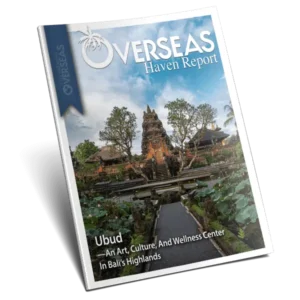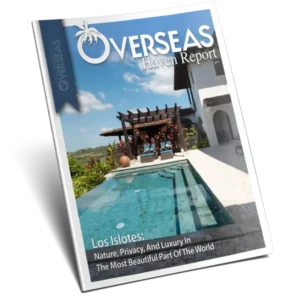Offering an eclectic combination of modern lifestyle and traditional culture with visible vestiges of both is Canggu (pronounced CHAN-goo), an up-and-coming neighborhood on Indonesia’s most popular island—Bali.
While Balinese communities have called Canggu home for generations, surfers paved the way for what would soon become a busy, ever-growing community of expats from around the world.
Villas began to spring up alongside traditional homes… Modern, innovative restaurants opened doors next door to Indonesian
warungs (family-run restaurants run out of homes)… Surf bars, art galleries, yoga studios, co-working spaces, and public markets selling artisanal products filled the empty spaces in between…
The result is something unique: a Balinese neighborhood that’s been modernized, staying true to its village roots while making space for first-world amenities. Canggu exists in the sweet spot between old and new, local and international, traditional and trendy… Some have even dubbed it the Brooklyn of Bali for this unique combination.
Another factor that’s driven Canggu’s popularity up is over-development of Bali’s south—the former epicenter of its tourism industry. Big-wig resorts, strip malls, and innumerable hawkers and trinket stands have made that part of the island tacky. Any vestiges of Balinese culture in places like Kuta have been erased, and so too has any of its charm. In short, it’s no longer a nice place to spend time…
A few decades ago, Canggu was nothing more than scattered villages, a few rice paddies, and long expanses of black-sand beach.
All along those beaches, though, were surf-ready waves… These provided the impetus for the area’s transformation over the past
20-odd years.
Surfers, ever pioneering into undiscovered territory, were the first foreigners to arrive in Canggu. The swells at Batu Bolong, Echo
Beach, and Pererenan enticed them to visit… the opportunity for peaceful, seaside living among the rice paddies compelled them to stay.
Canggu is distinctly different, the main reason being that it’s not a tourist destination—it’s residential. The foreigners that spend time here are residents, meaning hawkers and avaricious vendors have no business here. What you do have is regular people, both local and expat, going about their lives…





